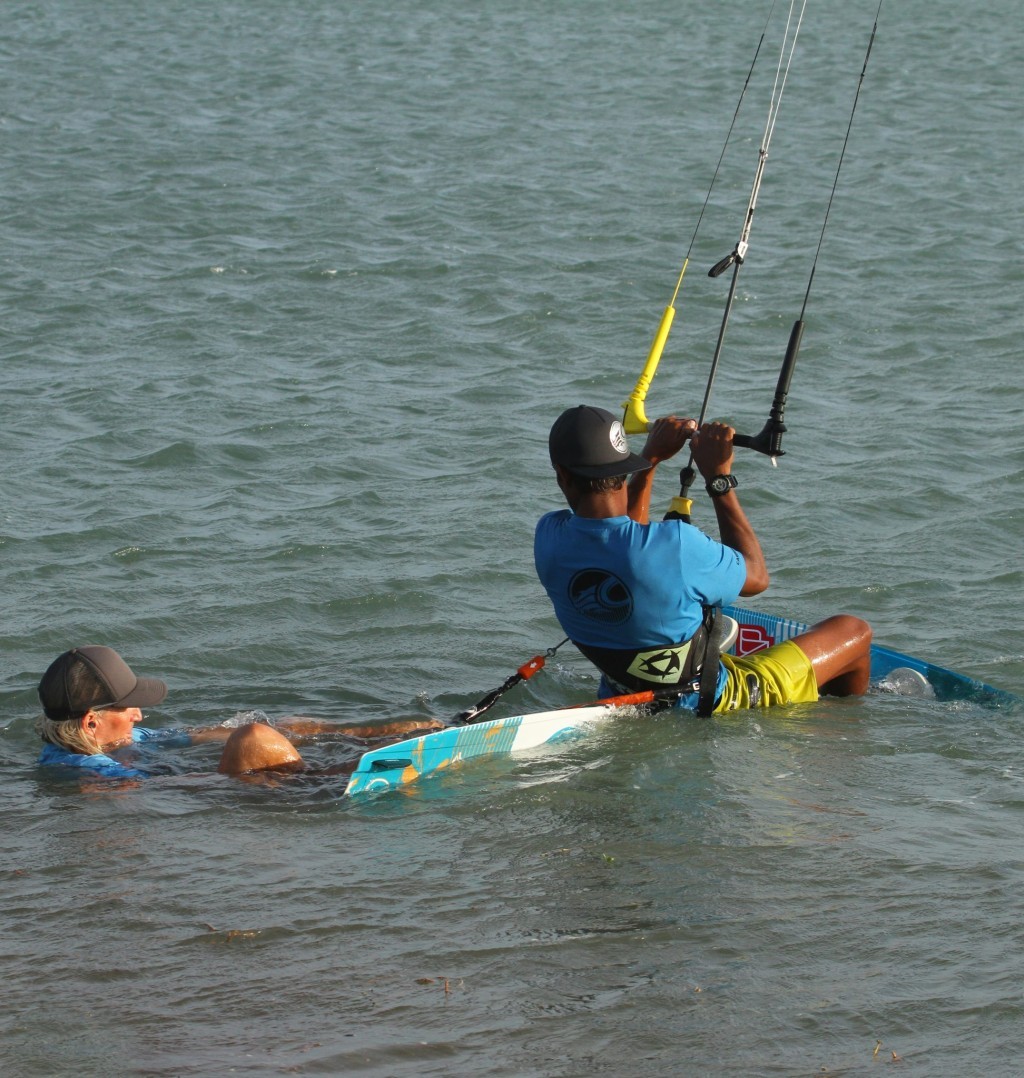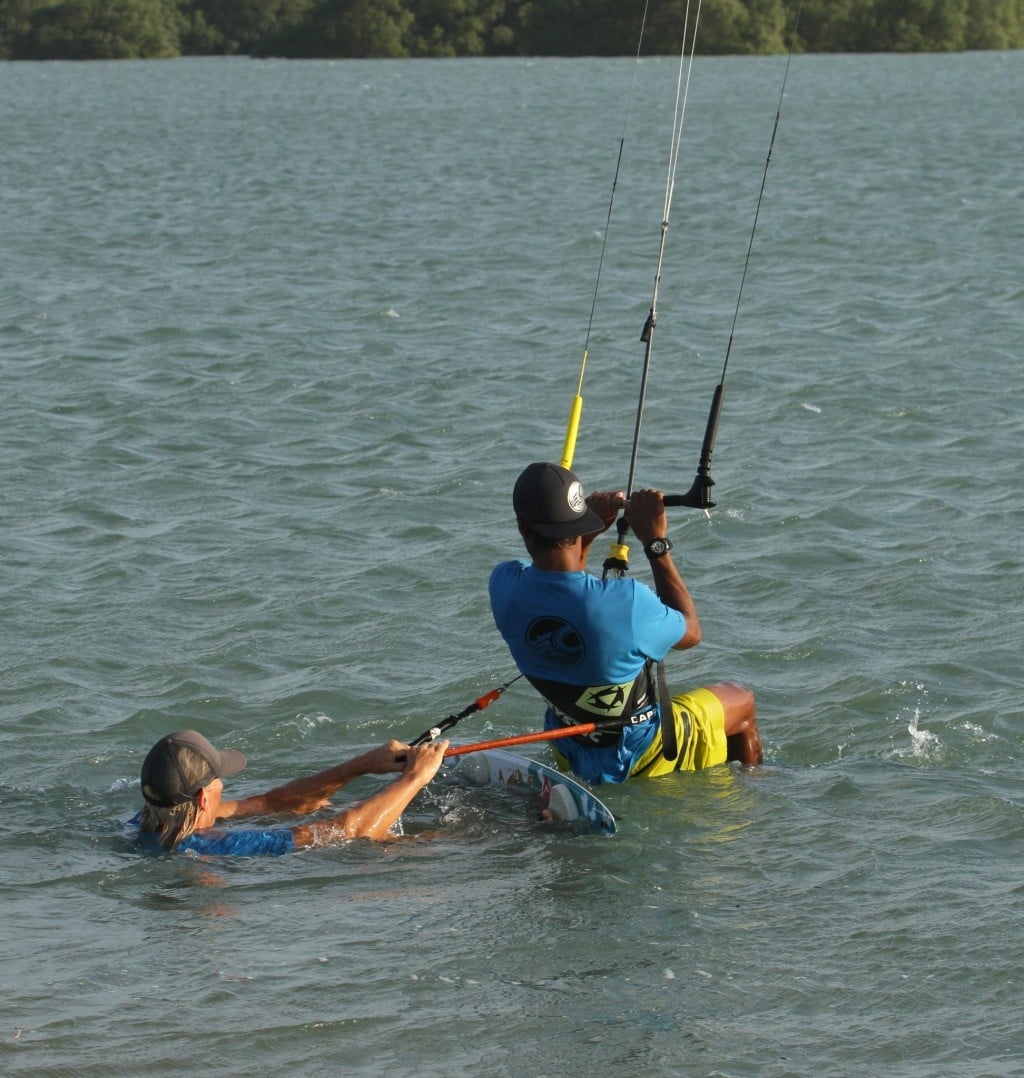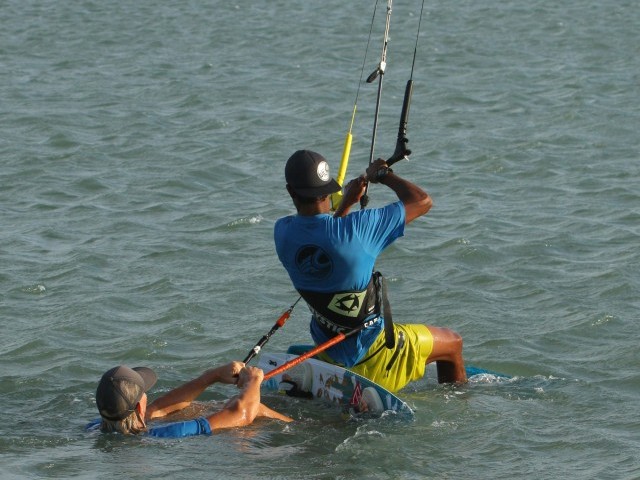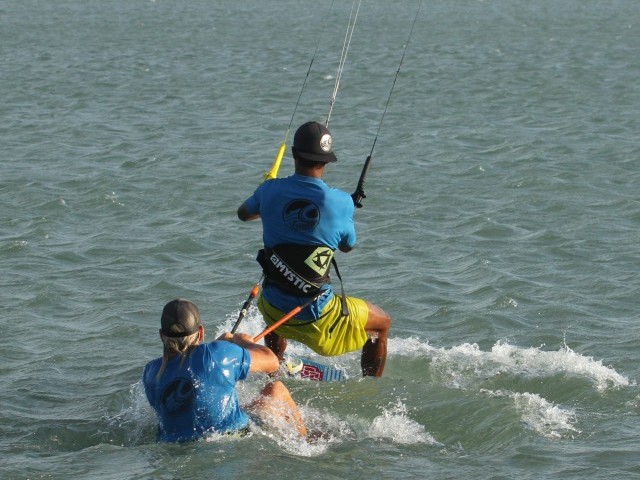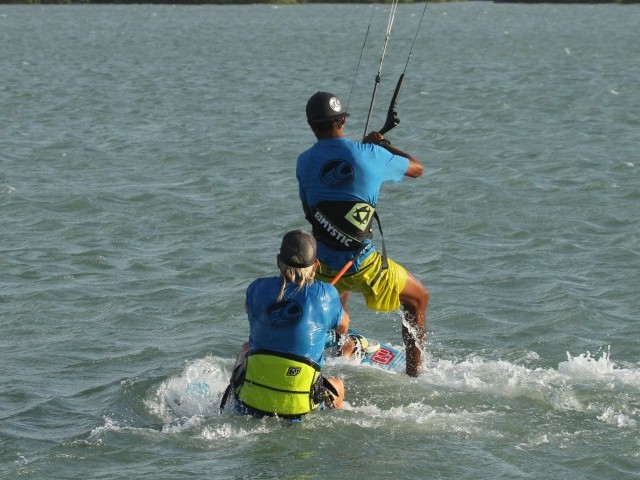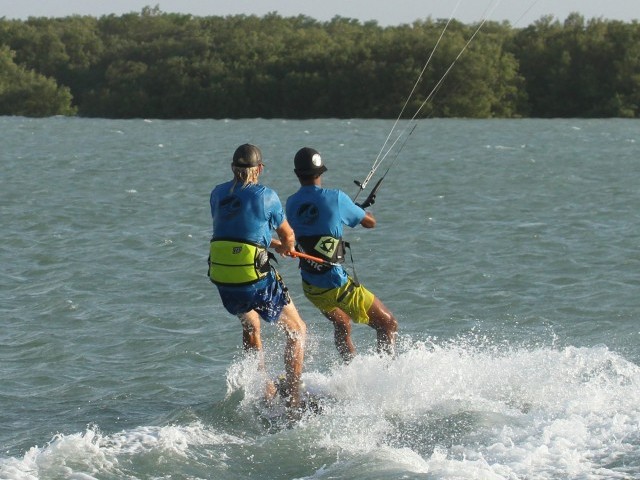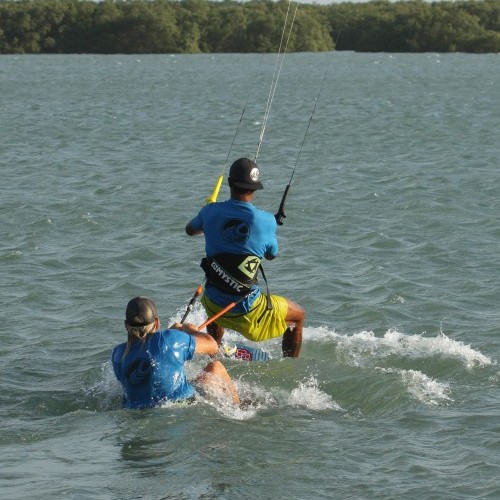
Rider Rescue
Technique / Intermediate
Introduction
Without wanting to sound all sensible, we thought it worthwhile to add something that is both functional and fun. Functionally the rider rescue is probably the most practical method to get someone back to the beach if they’ve lost their kite or it’s already been taken in. You often see kiters body dragging each other in, which does work, but it takes time, energy, strength and usually, culminates with a hefty walk back upwind as the drag will, unfortunately, take them downwind. Fun-wise you can do it just for a laugh, towing your friends on any form of board. This is a classic Heliarde rescue method if someone has a complete kitemare, so who better to demonstrate it than the man himself.
This is pretty simple to do if both pilot and rescuee, or tower and towed as we’ll use here, understand the concept. Let’s have a look at both parts so that you’re able to both rescue and communicate to the kiter in distress what you’d like them to do.
Set Up Pic A.
If you intend to tow someone, it will be more comfortable for both of you if you have a long leash. In which case the tower passes their leash behind them so that they have it looping from one side of their harness, around the back and then back in front of them. The advantage with a long leash is that it will give a bit so that the tower won’t feel it as much and the towed won’t feel like they’re having their hands ripped off. And it’ll place a bit more distance between both riders, meaning less likelihood of bumping into each other. However, if you don’t have a long leash, it is possible for the other kiter to hold onto the handle or leash line on the back of the harness. The tower should tell the towed where to grab and to get their board on. It’ll be easier for the towed if the tower is not drifting downwind too quickly. Here you can see Heliarde patiently waiting as Christian fumbles to get his board on with one hand while holding Heliarde’s leash with the other.
Talk Pic B.
The tower should ask the towed to let them know when they have the board on and are ready. Once they are, the tower should trim their sweet spot out if they haven’t already and pull the bar in so that both riders drift down wind. This will stretch the leash, and the towed will feel resistance against their board, making it easier to keep balanced and lined up. It’s also worth checking that both riders know which way they’re about to go. Final word from the tower is to tell the towed that they just need to roll up on the board and that there is no need to edge hard, just follow.
The Off Pic C.
Once both riders are ready the tower says go and dives his/her kite, while the towed keeps his/her knees up in their chest, just like they were taught in the beginning. You can see here the advantage of a long leash. Imagine if Christian was hanging onto Heliarde’s handlepass loop on the back of his harness, he’d need to bend forward a lot more… If you’re the tower be prepared for the pull back on your harness as the leash tightens. If you’re the towed hold tight – if you let go the tower will go flying.
Work The Kite Pic D.
It’s fair to say that you’re unlikely to get enough pull from your initial dive as the tower, unless the towed is considerably lighter than you. This means that you’ll need to get the kite working. Now without wanting to teach your grandmother to suck eggs, some kiters aren’t great at this skill so we’ll have a brief recap. To work the kite efficiently and effectively you need to use as much of the window as you can, keep the bar in the sweet spot and use both hands. So, if you’ve just dived the kite and not much is happening pull on your back hand while pushing away with your front hand. This will make the kite turn and respond quicker. It will also help you keep the bar out on the sweet spot and therefore prevent the kite from stalling, which will happen if you just pull in. And finally, to get the most bang for your buck, take the kite all the way up to 12 o’clock or even just a smidgen past it before diving it all the way down again. If the kite goes up, it might take you with it, so as you rise, start to dive. Keep doing this until you get moving. As the towed just stay tucked up small and wait until you feel that you have enough pull to roll up.
The Roll Up Pic E.
Up until now, the tower has been doing all the work while the towed just hangs on grimly waiting for some pull. As the tower keeps working the kite, the towed needs to be patient and wait until they feel that there is enough pull to waterstart. One of the main differences here is that the pull won’t be coming from above, but rather from in front (unless the tower takes the kite too far back:). What this means is that there is no kite to lift you onto the board. Instead, when you feel that the tower is moving enough to get you both going you must bend your knees completely, lean forward and roll up into a Gollum like hunched position, staying low over your board until you build speed. You must not try to edge, lean back and extend your legs. Think about how someone can roll you up off the floor while holding your hands.
Chocks Away Pic F.
And they’re off! While the towed waits patiently in a crouched position, the tower works up some speed. Both will eventually feel their board planing happily, and this is the queue for the towed to straighten up and ride along in a more comfortable positon. The tower decides on the course and the towed merely follows, while trying to keep their board from snapping at their hero’s ankles.
Top Tips & Problems
Power in the kite is important. When you think that we generally kite with enough to move us and jump, adding an extra sack of spuds will make a big difference. If you’re feeling a bit under juiced you may well have trouble towing someone.
As for being towed. If it does get uncomfortable and/or you can’t hold on, then please feel free to let go. For sure this will jettison the tower upwards of forwards, but unless you’re stupidly close to any downwind obstacles, they’ll only land in water.
Now have a gander at the sequence and videos to see the boys in action.
Keystones
- Communicate, how, and which way
- Leash behind
- Towed signals he/she is ready
- Tower signals the start and works kite
- Towed rolls up and doesn’t edge
This technique article was in Issue 67 of IKSURFMAG.
Related
By Christian and Karine
Christian and Karine have been working together as a coaching team, running improver to advanced kitesurfing clinics since 2003.







